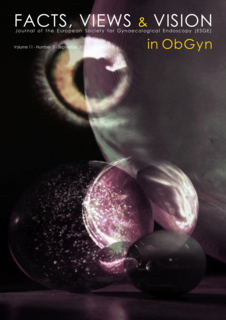Laser for twin-to-twin transfusion syndrome: a guide for endoscopic surgeons
Fetoscopy, Laser, monochorionic twin pregnancy, twin twin transfusion, TTTS, TOPS
Published online: Jan 24 2020
Abstract
Twin-to-twin-transfusion syndrome (TTTS) is the most important cause of handicap and death in monochorionic twin pregnancies. It is caused by a certain pattern of anastomoses between the two fetal circulations leading to an unbalanced blood and fluid transfer. This leads to severe amniotic fluid discordance and variable degrees of cardiac dysfunction. Untreated, this condition has a very poor survival rate. Fetoscopic laser has been shown to be the best first line treatment, which aims to dichorionise the placenta therefore arresting the inter-twin transfusion. Fetoscopic laser is a causative therapy, which aims to functionally create a dichorionized placenta hence arresting inter-twin transfusion. This is achieved by percutaneous sono-endoscopic coagulation of placental anastomoses. In addition, redundant amniotic fluid is drained. Fetoscopic laser coagulation of chorionic plate anastomoses is safe and effective. There is level I evidence that it is the best treatment modality, in particular when the placental surface is lined along the vascular equator. A recent meta-analysis confirmed an increased fetal survival and decreased risk for neonatal and pediatric neurologic morbidity. Laser therapy is the first line therapy for TTTS. The technique is quite standardized and safe and effective in experienced hands. Herein we describe the technique and current instrumentation used for this procedure.



